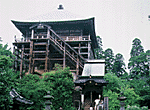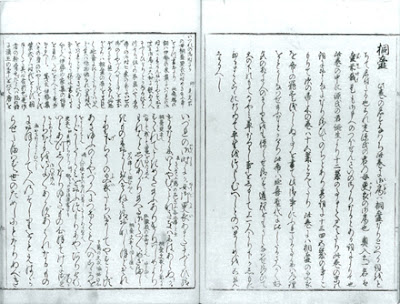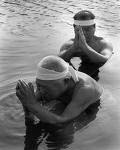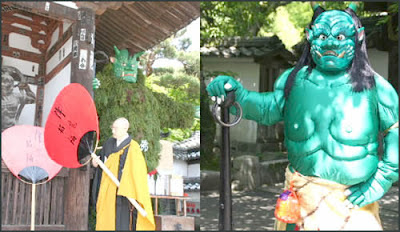[ . BACK to WORLDKIGO TOP . ]
:::::::::::::::::::::::::::::::::::::::::::::::::::::::::::::::::::::::::::::::::::::::::::::::::::
Kasamori Inari Fox Shrines
***** Location: Japan
***** Season: Topic
***** Category: Humanity
*****************************
Explanation
Kasamori Inari Fox Shrine, 笠森稲荷
Kasamori Inari Fox Shrine カサモリ稲荷
Kasamori Inari Dai Myojin 瘡守いなり 大明神
Kasagami, God of the Smallpox Scabs 瘡神(かさがみ)
瘡守薬王菩薩 Kasamori Yaku-O Bosatsu. PHOTO .
Kasa mori, most probably meaning
to protect (mori 守り) the scab (kasa 瘡(かさ) on a wound or smallpox.

This Inari fox deity was popular during the Edo period when smallpox where dangerous. If not treated properly, they would leave deep skars in faces of people.
This Deity is also worshipped to protect and cure from other skin diseases, ulcers and also to help cure syphillis.
The scab of a wound was represented as an earthen dumpling (tsuchi dango), offered to the Fox Deity Inari. When the wound healed properly, the dumpling was covered with white rice powder (looking like the white powder used for doll making, gofun) as an act of thanking the Deity.
Fox gods like to eat dumplings of white rice, but this was not affordable as a common offering, so people out-tricked the tricky fox god and made mud and earth dumplings for him. Since the Fox god was waiting for the real ones after he performed his miraculous treatment, he would usually carry out the wish of the worshipper. Now when the patient was healed, the Fox god was offered mud dumplings with a thin coat of rice powder.
Since smallpox were very much feared during the Edo period, there were many shrines to this deity to pray for protection and healing.
The daily offering to this deity is also a set of two mud dumplings (土の団子).
The famous beauty of the Edo period,
Kasamori O-Sen (1751~1827) 笠森お仙, also worshipped at a famous Kasamori Shrine in Edo for the protection of the beauty of her skin; there are many woodblock printings about her, especially by Harunobu Suzuki.
Osen, the "teahouse girl at Kasamori Inari Shrine".
Kasamori no O-Sen:English Reference
. Kanban musume 看板娘 Kamban "advertising servant" .
 CLICK to look at many prints!
CLICK to look at many prints!
:::::::::::::::::::::::::::::::::::::::::::::::::::::::::::::::::::::::::::::::::::::::::::::::::::::
手鞠歌 Children's song about the dumplings
向う横丁のお稲荷さんへ、
一文あげてざっと拝んでお仙の茶屋へ、
腰を掛けたら渋茶を出して、
渋茶よくよく横目で見たら、
米の団子か土の団子かお団子団子
Let's to go the Fox Shrine over there.
Let's visit the teahouse of O-Sen.
Let's sit down and have some bitter tea!
Sip the tee and peek at her and then
dumplings from rice, dumplings from mud,
dumplings, dumplings, dumplings !
O-Sen bringing dumplings
 by Suzuki Harunobu
© Kubota: Kasamori Osen
by Suzuki Harunobu
© Kubota: Kasamori Osen
Japanese LINK with many photos !
:::::::::::::::::::::::::::::::::::::::::::::::::::::::::::::::::::::::::::::::::::::::::::::::::::::
CLICK for photos of the Shrine !
カサモリ稲荷
その笠森お仙の「笠森」とは、もちろん笠森稲荷から来ているのであるが、いろいろな字があてられているので、とりあえずここでは「カサモリ稲荷」としておこう。カサモリのカサとは本来「瘡(かさ)」の意で、モリは「守り」である。疱瘡や腫れ物・性病治しの神としてそれは信心されており、カサを表した土団子を神前に奉納し、平癒の後は白い米粉の団子をそこに供えて礼参りをするという祈願が、そこでおこなわれていた。この団子の奉納習俗のことは、先に掲げた童謡の歌詞の中にも歌われている。
© www.kashiwashobo.co.jp
There were many shrines of this name in many places of Japan, since the smallpox were a difficult disease to cure.
When the great shogun Tokugawa Ieyasu fell ill with a swelling on his head, he prayed to the Kasamori Inari Shrine in Edo to get well.
Yamanashi Kasamori Inari Jinja
月見里笠森稲荷神社(やまなしかさもりいなりじんじゃ)
The reading of YAMANASHI is special here.
 Kasamori Inari Shrine in Morioka, Hachimangu Shrine compound
Kasa no Mori Inari Shrine in Osaka, Takatsuki
Kasamori Inari Shrine in Morioka, Hachimangu Shrine compound
Kasa no Mori Inari Shrine in Osaka, Takatsuki (かさのもりいなり)
Especially helpful for syphillis patients (baidoku 瘡(かさ=梅毒のこと). 瘡毒平癒の神.
.............................................
Kasamori Kannon, 笠森観音
Chiba Prefecture

Kasamori Temple was founded in 784, and is known as the 31st holy temple among the 33 holy grounds of Bando. This important cultural asset, supported by 61 pillars of various lengths and dedicated to Kannon (Goddess of Mercy), is a rare sight even in Japan.
The temple is also known for housing a haiku monument composed by the famous haiku poet
Matsuo Basho.
© www.ccb.or.jp Chiba
External LINK
Pilgrimage to Bando Fudasho : Kasamori, Chonan
 五月雨にこの笠森をさしもぐさ
五月雨にこの笠森をさしもぐさ
samidare ni kono Kasamori o sashi mogusa
during the rainy season
here at Temple Kasamori
I get some moxabustion
Matsuo Basho at Temple Kasamori-ji 笠森寺
Moxibustion (moxabustion) and Haiku
:::::::::::::::::::::::::::::::::::::::::::::::::::::::::::::::::::::::::::::::::::::::::::::::::::::
*****************************
Worldwide use
A Tale from Taiwan
" Hot and delicious dumplings! Red beans and sesame.
One for ten cents, two for twenty cents and three for free!"
Mountain Ban Pin Shan
*****************************
Things found on the way
DARUMA
Daruma, Smallpox and the color Red, the Double Life of a Patriarch
by Bernard Faure
:::::::::::::::::::::::::::::::::::::::::::::::::::::::::::::::::::::::::::::::::::::::::::::::::::::
. Ichiron san no kubi ningyoo いちろんさんの首人形
head dolls from Ichiron san .
in memory of
Minamoto no Tametomo 源為朝 (1139 - 1177), sold at Kasamori Inari
:::::::::::::::::::::::::::::::::::::::::::::::::::::::::::::::::::::::::::::::::::::::::::::::::::::
Shining Mud Balls, hikaru doro dango 光る泥だんご
English Reference, Bruce Gardner
Japanese Reference
*****************************
HAIKU
Disease-preventing fox god ... by Issa
霜がれや胡粉の剥し土団子
shimogare ya gofun no hagashi tsuchi dango
frost-killed grass--
whitewash peeling off
the mud dumpling

nakamura sakuo comment :
1819 the most sad year of Issa.
His daughter was affected by smallpox.
As the general custom, he prayed to the fox god, offering the mud dumpling.
If the sickness would be recovered, the mud would be painted whitewash.
But she died.
sakuo renku
剥がれて吾が子 あの世へ旅立つ
hagarete wagako anoyo he tabidatu
peeling off
she has gone to the other world
© Look at more haiga by Nakamura Sakuo HERE !
...........................................
tsuchi dango kyô mo kogarashi kogarashi zo
mud-dumplings--
today too,
winter wind!
u no hana ya kodomo no tsukuru tsuchi dango
deutzia in bloom
children make
mud-dumplings
Issa
Tr. David Lanoue
Seen in light of the smallpox background, the children are not just playing around, it seems! Maybe they are making offerings to pray for their siblings.
*****************************
Related words
*****
Fox (kitsune) Japan
:::::::::::::::::::::::::::::::::::::::::::::::::::::::::::::::::::::::::::::::::::::::::::::::::::::::::::::::::::::::::::
[ . BACK to DARUMA MUSEUM TOP . ]
[ . BACK to WORLDKIGO . TOP . ]
:::::::::::::::::::::::::::::::::::::::::::::::::::::::::::::::::::::::::::::::::::::::::::::::::::::::::::::::::::::::::::






















































